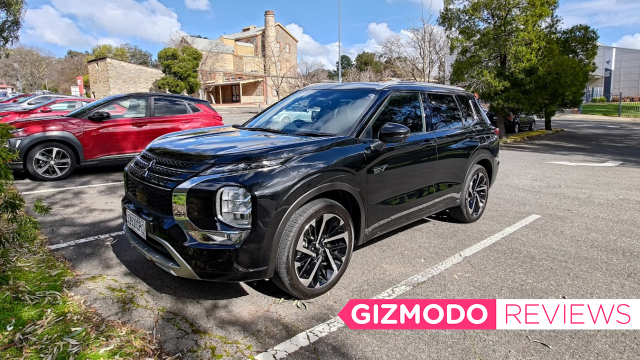The Outlander PHEV 2022 is Mitsubishi’s answer to electric vehicles in the Australian market.
Though demand for electric vehicles is high internationally, especially in the Australian market, Mitsubishi sees Australia as not ready yet, as you would have read in my interview with the CEO of the Australian division.
With a national grid powered by mostly fossil fuels, a national public charging network still in its infancy, and with a lack of fuel efficiency standards, Australia is bound to get more PHEVs from Mitsubishi over the next decade.
Mitsubishi reckons that PHEV technology offers the best of both worlds, touting a battery shy of 100km and a hybrid system that leverages power generation instead of an always-on petrol-fuelled motor.
The 2022 Mitsubishi Outlander is the latest model of the first PHEV in the Australian market.
Despite our limited time with the vehicle (we only had access to the car over roughly a day), we’ll be sharing our thoughts on it and looking at the pros and cons of buying a PHEV.
Let’s get stuck in.

The 2022 Mitsubishi Outlander PHEV
What is it?
Mitsubishi's latest PHEV SUV.
Price
$54,490 for the ES, $60,990 for the Aspire, $65,990 for the Exceed, $68,490 for the Exceed Tourer
Like
Spacious, drives well with nice visibility, instrument cluster is very natural and easy to use.
No like
Small battery range (84km). Some might not like the instrument cluster and infotainment system feel.
The hybrid transition
I think we should start by demystifying what kind of hybrid the Mitsubishi Outlander 2022 PHEV is. While many hybrids on the market right now rely on a system where the petrol motor is constantly on, either functioning as a generator for a short-range city-oriented battery, or a standard petrol motor operating at the same time as an electric motor, the Outlander PHEV doesn’t simply subscribe to this concept. If you’re interested in other PHEVs available in Australia, Which Car has a terrific article on that.
The Outlander 2022 has a maximum driving range of 84km on its 20kWh electric battery, with the option to be plugged in via a Type 2 or CHAdeMO cable for a recharge. The CHAdeMO plug can charge to 80 per cent within 38 minutes, whereas the Type 2 plug can charge from 0 to 100 per cent within 6.5 hours.
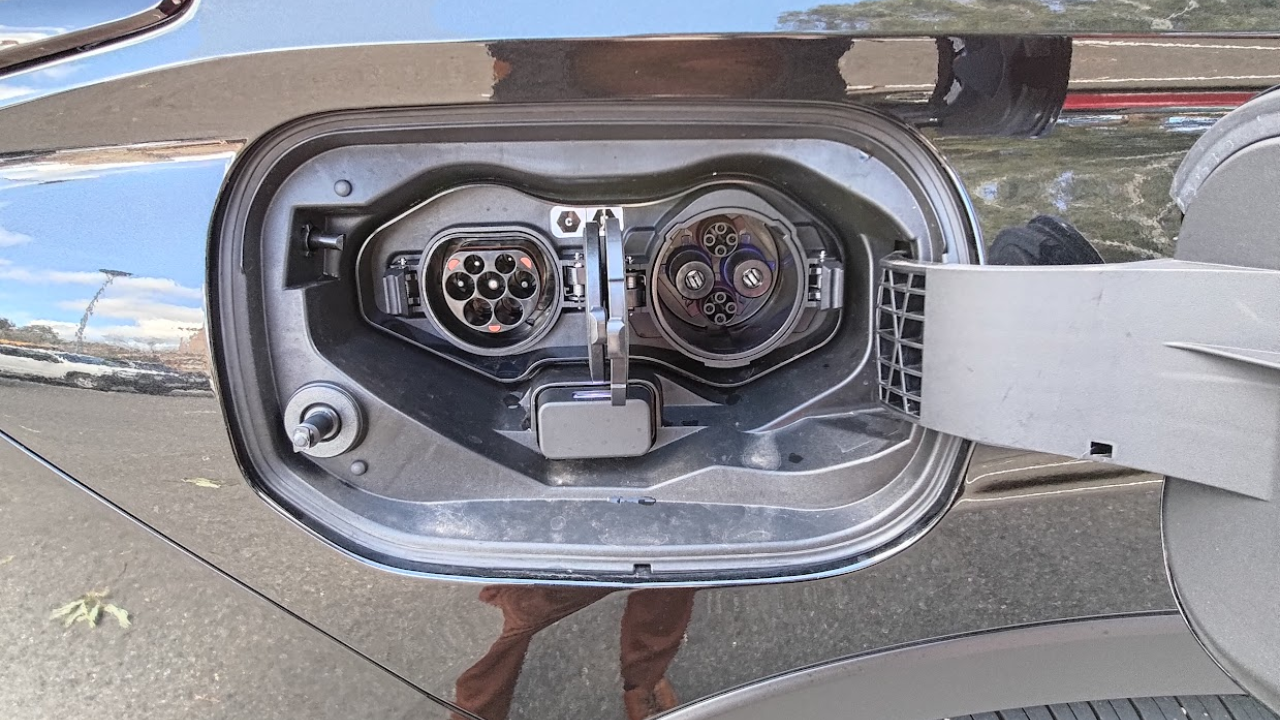
On the standard mode of driving, you’ll only hear the petrol motor (at the front) kick in in two circumstances: at higher speeds (to provide additional power to the front wheels) and when it’s generating power for the battery from petrol.
If you want to have the petrol motor on at all times, you have this option, but it’s not the standard way of driving. In ideal circumstances, you’d be using the EV mode for short trips and in cities, and you’d have the petrol motor active on highway treks. The car also has a projected 800km range when mixed with petrol, along with regenerative braking for the battery.
And, at first glance, this isn’t an unattractive sales pitch. For most of your life, you’d likely be using the car as an EV, without petrol coming into the equation unless required for long distances, charging the car at home for day-to-day trips.
This alleviates your reliance on charging stations across Australia, which you’re able to use, but you’re also not excluded from petrol stations, which are far more common.
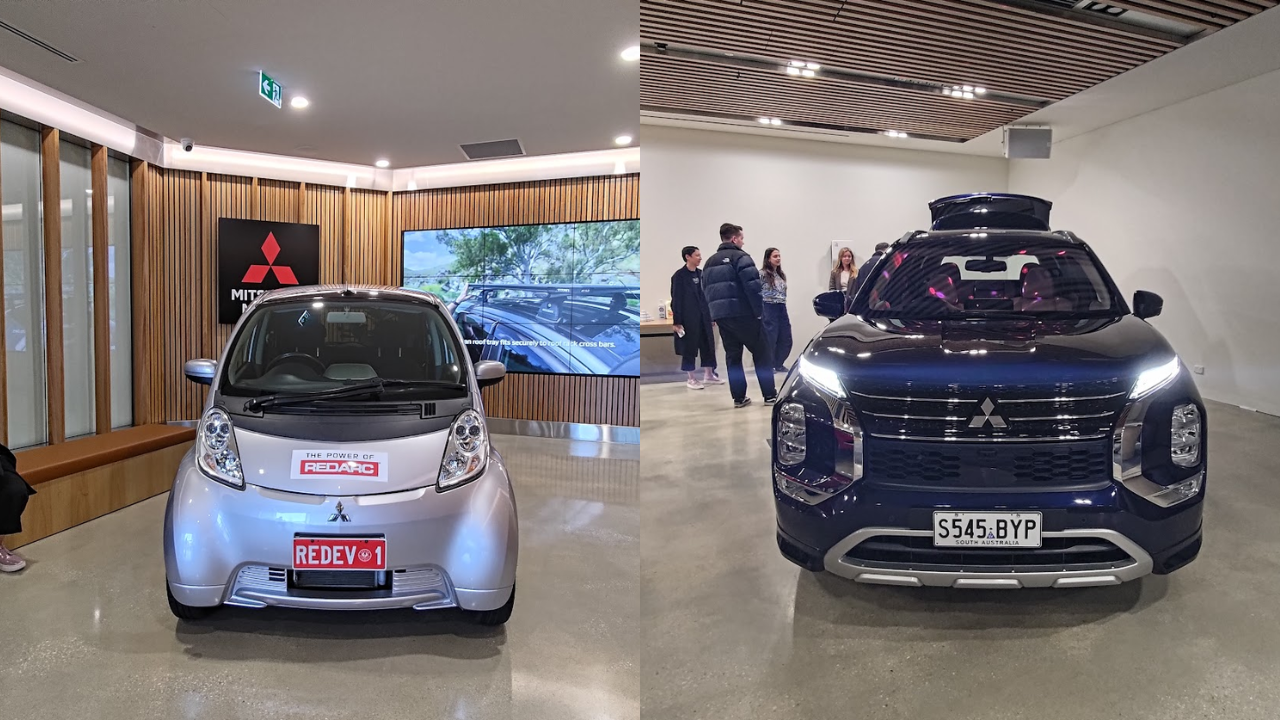
At the time of writing (subject to change as EV technology improves), I’m unopposed to this for a few reasons, and not because of the “EVs don’t have good range” earworm.
With access to petrol stations, you can avoid the wait times at public EV charging stations. Charging stations usually only have parks for two vehicles at any given time, and if they’re being used, you’re going to have to wait a while, often between 10 minutes to an hour.
That’s a lot longer than if a petrol bowser were being used at a service station. So, for those long drives, you’d be using petrol no doubt.
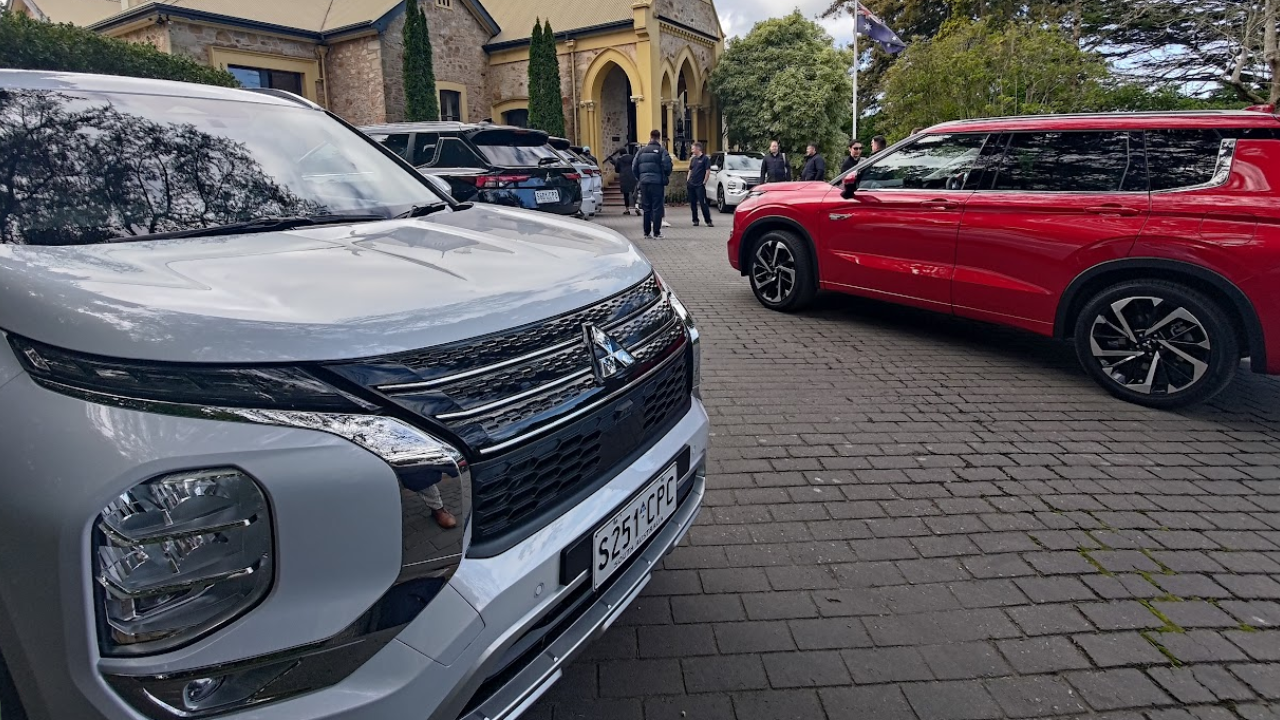
But additionally, consider the campers and travellers of Australia, to which SUVs like the Outlander appeal to, as an example, albeit a limited one.
With this vehicle, were you to go off-the-grid, all you need to do is bring some backup petrol cans with you to make sure you’ve still got power. With an EV… well, I don’t think you’ll find a wall socket for the emergency charger often in the bush.
I could harp on about this for hours, but at the moment, EVs don’t have an answer to these problems, especially not in Australia (beyond the need for car culture to change). I know that EV owners and prospective buyers are especially passionate about electric cars, but we can’t deny that refuelling speed and energy portability is still a significant advantage of petrol vehicles.
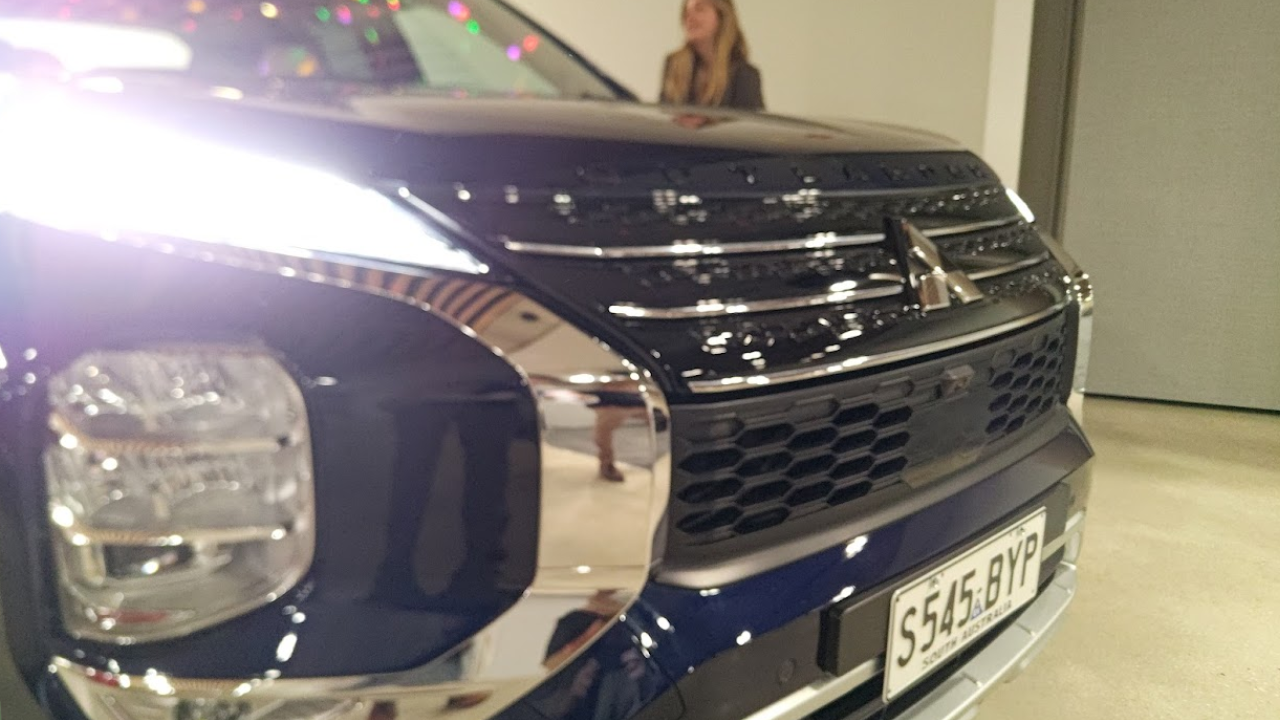
The hybrid experience
Mitsubishi’s distinctive design isn’t absent on the 2022 Mitsubishi Outlander, with the top of the grill swapped out for a plastic cover. Externally, the car is quite huge, although visibility is quite nice inside.
Internally, the car is quite spacious. The seats feel warm and unrestrictive. On the more expensive Exceed and Exceed Tourer models, two extra seats can be added in the back. The orange secondary colours in the photos below are available on the Exceed Tourer model.

With the car being a PHEV, there’s no room for a frunk, although I was quite impressed with its storage space.
The cheaper ES and Aspire models have a maximum internal capacity of 1,478L, whereas the Exceed and Exceed Tourer models can fit 1,473L and 1,461L respectively. The car consumes about 1.5L fuel for every 100km travelled (NEDC).
Of the cars I’ve reviewed, it feels the most “old school”, less caught up with innovative tech like touch screens and autopilot, and more interested in what it does best: just being a car.
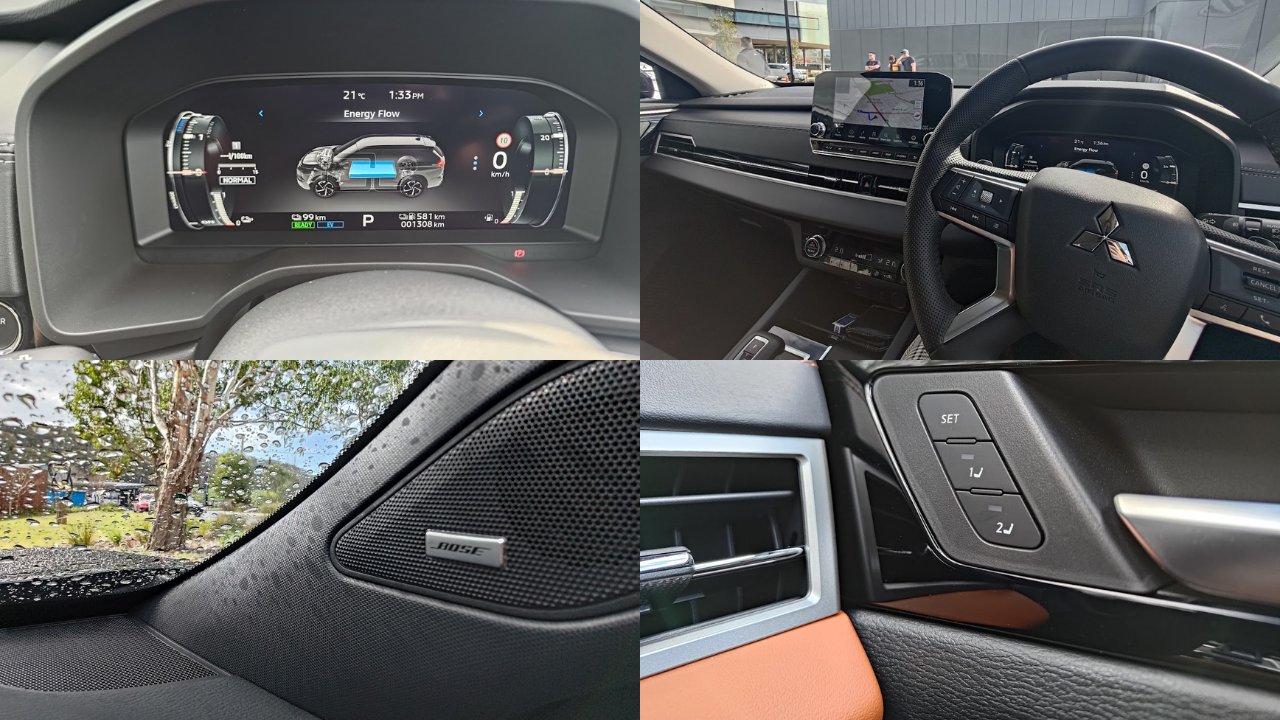
The feature that most interested me was the infotainment system. I think it’s quite a sensible design, covered in dials and buttons with a small touchscreen for limited interaction (mostly for the inbuilt GPS).
Cars like the Polestar 2 and the Tesla Model Y rely quite heavily on touch screen functionality, but the 2022 Mitsubishi Outlander doesn’t really focus hard on innovation or gimmicks. If it ain’t broke, why fix it?
The car drives quite smoothly, having tested it across the windy roads of the Adelaide Hills and the straights within Adelaide. It’s also capable of 0 to 100km/h in 10.2 seconds (8.2 in power mode).
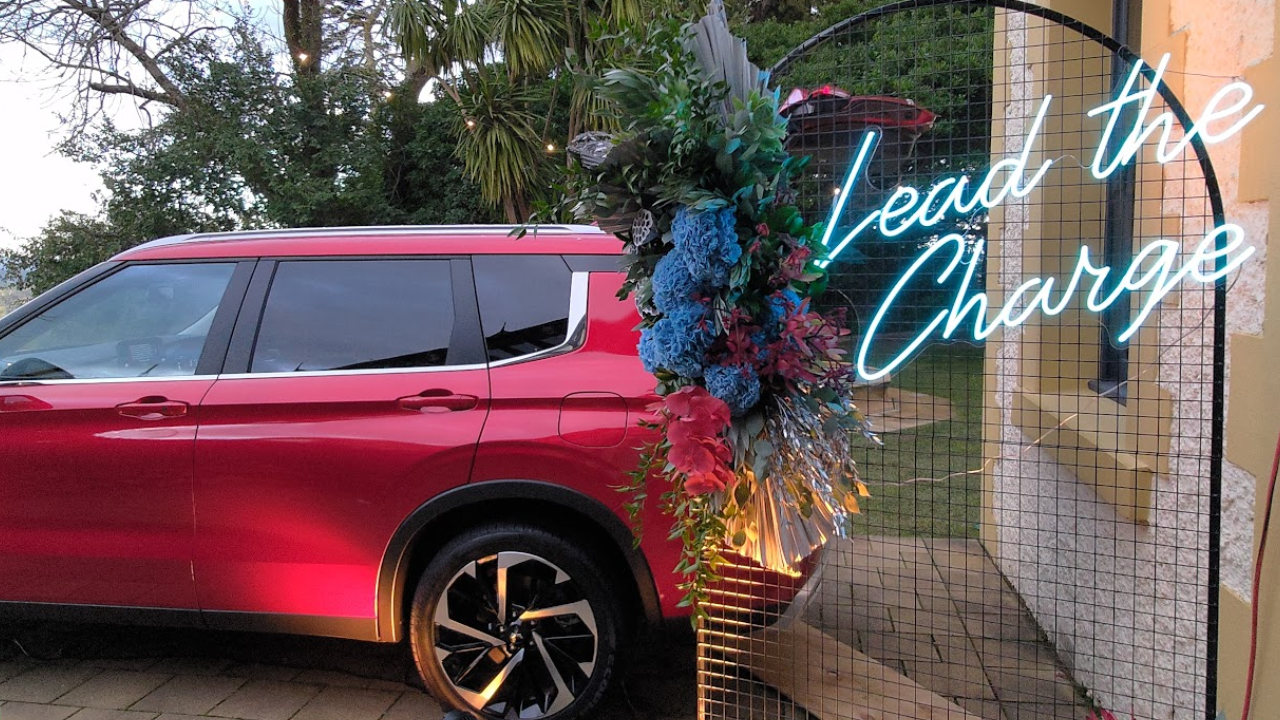
The hybrid gamble
Mitsubishi has bet its next Australian PHEV, and the foreseeable future of its more eco-friendly vehicles in Australia, on the modern grid and national charging network.
This might be a cynical way to think about PHEV technology in Australia, but I do wonder how quickly we’ll adopt EVs over the next decade. Excitement around the technology is only increasing, at both government and private levels, so perhaps the concerns Mitsubishi has for the Australian market won’t last much longer.
However, though sales numbers see EVs only becoming more popular, and even if petrol is phased out by carmakers, the internal combustion engine market will need to exist in tandem with EVs for some time.
It’s concerning that Mitsubishi hasn’t developed a modern electric vehicle for markets outside of Japan just yet, especially with so many other carmakers announcing end dates for petrol-fuelled vehicle development, even if the carmaker sees the Australian market as immature for EVs (and we haven’t even talked about the cost difference between fuel and electricity).
Personally, I think it’s a hard case to make that this car represents a sound transition to electric vehicles. Change should be pursued at all levels as soon as possible, and the longer we develop petrol-fuelled vehicles and hold back from renewables, the more damage we’re doing.
But Mitsubishi doesn’t make luxury cars, which is what EVs are still largely considered. Perhaps that’s why they’re holding back, while the technology is still quite expensive.
Compared to most EVs, the 2022 Mitsubishi Outlander is still quite cheap and offers a great amount of space. That being said, I do wonder if it’s worth purchasing instead of an EV for most people, in particular, people outside of my earlier examples who won’t put the car through strenuous tasks. Cheaper EVs than the Outlander with similar body types exist, so cost is quickly becoming a non-issue.
In many ways, the 2022 Mitsubishi Outlander PHEV is a vehicle based on transition. Not its own transition, but transitions later on.
The thing I can’t stop thinking about is: is this the car we should be buying when widespread electrification is just beginning?
The 2022 Mitsubishi Outlander PHEV goes on sale on August 15.
